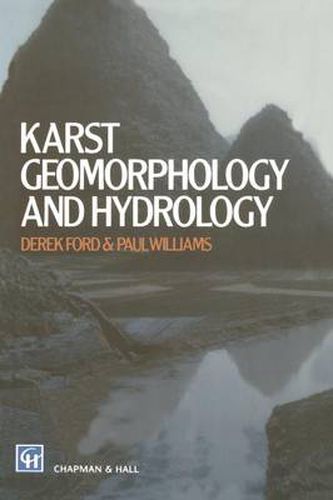Readings Newsletter
Become a Readings Member to make your shopping experience even easier.
Sign in or sign up for free!
You’re not far away from qualifying for FREE standard shipping within Australia
You’ve qualified for FREE standard shipping within Australia
The cart is loading…






This title is printed to order. This book may have been self-published. If so, we cannot guarantee the quality of the content. In the main most books will have gone through the editing process however some may not. We therefore suggest that you be aware of this before ordering this book. If in doubt check either the author or publisher’s details as we are unable to accept any returns unless they are faulty. Please contact us if you have any questions.
components dissolve. The alumino silicate minerals are the great example of the incongruent class, releasing Na+, K+, HCO-, etc. ions in reaction with J water but retaining most of their atoms in re-ordered solids such as kaolinite. The karst minerals are all congruent in normal conditions. Incongruent solution of dolomite and precipitation of calcite may occur in some exceptional conditions mentioned later. The sample of congruent minerals in Table 3. 1 contains all the common elements of crustal rocks except Fe, and furnishes a majority of the common dissolved inorganic species. The range of solubility is enormou~. Gibbsite is an example that is insoluble to all intents and purposes; even in the most favourable circumstances encountered on the surface of this planet physical processes will disaggregate it and remove it as colloids or larger grains before there is significant solution damage. Rock salt (halite) is so soluble that it is rapidly destroyed in outcrop except in the driest places; it is principally important for its role in interstratal karstification. Sylvite and mirabilite are rarely encountered and never in great bulk. They occur as minor secondary cave minerals (see section 8. 4). Gypsum and anhydrite are quite common in outcrop. Karst features develop upon them rapidly because of their comparatively high solubility. Limestone and dolomite are common in outcrop. Their maximum solubility varies with environmental conditions but never approaches that of gypsum. Quartzite and siliceous sandstones are equally common in outcrop.
$9.00 standard shipping within Australia
FREE standard shipping within Australia for orders over $100.00
Express & International shipping calculated at checkout
This title is printed to order. This book may have been self-published. If so, we cannot guarantee the quality of the content. In the main most books will have gone through the editing process however some may not. We therefore suggest that you be aware of this before ordering this book. If in doubt check either the author or publisher’s details as we are unable to accept any returns unless they are faulty. Please contact us if you have any questions.
components dissolve. The alumino silicate minerals are the great example of the incongruent class, releasing Na+, K+, HCO-, etc. ions in reaction with J water but retaining most of their atoms in re-ordered solids such as kaolinite. The karst minerals are all congruent in normal conditions. Incongruent solution of dolomite and precipitation of calcite may occur in some exceptional conditions mentioned later. The sample of congruent minerals in Table 3. 1 contains all the common elements of crustal rocks except Fe, and furnishes a majority of the common dissolved inorganic species. The range of solubility is enormou~. Gibbsite is an example that is insoluble to all intents and purposes; even in the most favourable circumstances encountered on the surface of this planet physical processes will disaggregate it and remove it as colloids or larger grains before there is significant solution damage. Rock salt (halite) is so soluble that it is rapidly destroyed in outcrop except in the driest places; it is principally important for its role in interstratal karstification. Sylvite and mirabilite are rarely encountered and never in great bulk. They occur as minor secondary cave minerals (see section 8. 4). Gypsum and anhydrite are quite common in outcrop. Karst features develop upon them rapidly because of their comparatively high solubility. Limestone and dolomite are common in outcrop. Their maximum solubility varies with environmental conditions but never approaches that of gypsum. Quartzite and siliceous sandstones are equally common in outcrop.